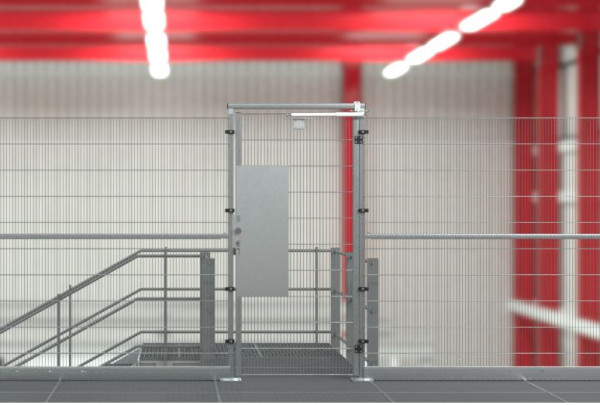Fall protection: Safely on the move at different heights
Working at heights is associated with special dangers. In these cases, fall protection devices are therefore mandatory. This also applies to intralogistics. But what actually counts as fall protection to protect employees from accidental falls?
What is fall protection?
The term fall protection is used to describe a device that is intended to protect people from falling. They are therefore used in many areas. From the fire department to gymnastics to warehouses and logistics - in all these areas fall protection systems are designed to protect people and vehicles from unintentional falls.
Fall protection systems in intralogistics
Fall protection is also an important part of occupational safety for employees in logistics. According to the law, an employer must also ensure the safety and physical integrity of employees in this area. Safety devices are therefore already available in many warehouses. They must be installed on traffic routes such as ramps, platforms or catwalks that are more than one meter above the ground or where there is a risk of falling through recesses or openings. The European standard EN ISO 14122-3 even requires a fall protection system from a fall height of 50cm. Because even at low heights, falls can have serious consequences.
A simple safety fence is not a fall protection
While on construction sites or when working on roofs, temporary fall protection devices such as drop nets are usually used for protection or employees wear personal protective equipment (PPE), in warehouses fixed safety fences are usually used. The following applies: Safety fences must meet certain requirements in order to be used as fall protection.
A simple safety fence, which is primarily intended to keep people away from machines or danger points, does not meet these requirements. For example, it does not have the necessary screw connections to withstand the impact energy that is generated when an employee falls against the safety fence.
For this reason, the safety fence, i.e. the separating safety device alone, is not regarded as a fall protection. The separating safety device only serves as personal protection against reaching dangerous areas. It cannot, however, replace fall protection (e.g. railings), since other normative specifications such as DIN EN ISO 14122-3 apply here.
Double protection thanks to ECONFENCE® BASIC LINE fall protection
Safetyfence24 has therefore combined the two components safety fence and fall protection and developed the BASIC LINE fall protection system.In this case, the railing principle was integrated into the separating safety guard. As the first certified safety fence with integrated fall protection, the BASIC LINE fall protection system thus fulfils a double purpose. On the one hand, it serves as fall protection, on the other hand, as distance protection device. This makes the ECONFENCE® BASIC LINE fall protection system more than a simple safety fence and a real innovation for intralogistics.
This works because the fall protection system is based on the ECONFENCE® BASIC LINE from Safetyfence24. The safety fence serves as a fixed separation between personnel and danger points on machines or systems and thus offers more protection for employees in production and warehouse logistics. Thanks to the frameless grid construction, employees cannot simply reach through the fence and injure themselves in the worst case.
By expanding the ECONFENCE® BASIC LINE with high-strength crossbars and stable baseboards, the simple safety fence is now also transformed into a fall protection system for intralogistics. This results in double protection for employees and service personnel. Thanks to the reinforcements, the ECONFENCE® BASIC LINE fall protection system can withstand even higher loads to prevent accidental falls. At the same time, Safetyfence24's proven lattice construction continues to prevent danger points on machines or systems from being reached.
The frameless element design also allows the protection system to be adapted individually and according to one's own requirements. This results in a particularly flexible safety fence system that provides double protection for personnel and employees.







